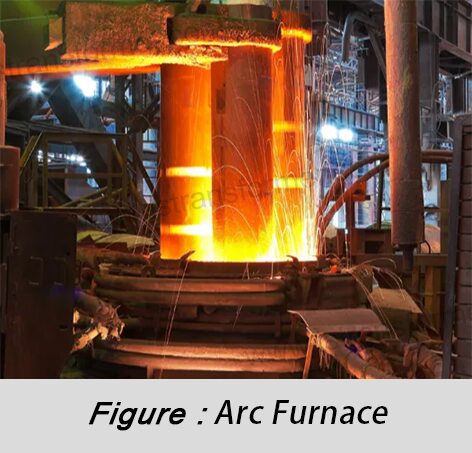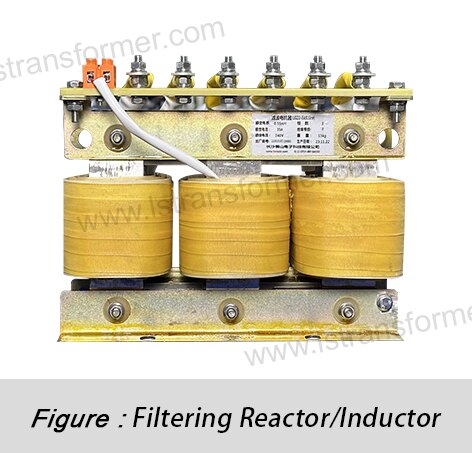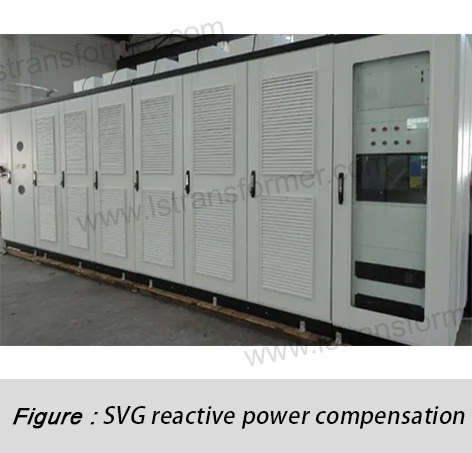How to Compensate for Three-Phase Imbalance? —A Step-by-Step Breakdown of Reactor + SVG Hybrid Mitigation Solution
How to Compensate for Three-Phase Imbalance?
—A Step-by-Step Breakdown of Reactor + SVG Hybrid Mitigation Solution
In industrial plants, data centers, and renewable energy power stations, "three-phase imbalance leading to soaring line losses and equipment damage" has become a core pain point in global power systems. According to IEEE 1159 standards, a 10% three-phase imbalance can reduce transformer efficiency by 6% and increase cable losses by 200%. This article, based on international standards such as IEC 61000-3-6 and ANSI C84.1, provides an in-depth analysis of the collaborative mitigation principles of reactors and Static Var Generators (SVG), along with cross-regional engineering validation data.
Content
1. Causes of Three-Phase Imbalance and Quantified Economic Losses
● Root Causes:
(1)Asymmetric Load Connection:Single-phase high-power equipment (e.g., arc furnaces, welding machines) concentrated on one phase can cause phase current differences exceeding 15%. For example, one phase current reaches 300A, while the other two phases are only 180A, resulting in an imbalance of 40% (Calculation formula: Imbalance % = (Max Phase Current – Average Current) / Average Current × 100%).
(2)Asymmetric Voltage Source:Grid-side voltage deviations (e.g., a 5% drop in Phase A voltage) lead to uneven three-phase power distribution (IEEE 1159-2019 standard limit: 2%).
(3)Fault-Induced Imbalance:Line breaks or grounding faults cause sudden impedance changes in one phase, leading to a surge in zero-sequence current (up to 1.5 times the phase current).
● Direct Impacts:
(1)Neutral Point Shift:Overloaded neutral line current (IEC 60364-5-52 stipulates ≤30% of phase current) can cause cable overheating or even fires.
(2)Transformer Loss Surge:Negative-sequence current distorts core magnetic flux, increasing eddy current losses by 200% (IEC 60076-1 test data).
2. Fundamental Compensation Principle of Reactors and Selection Strategies
● Zero-Sequence Reactor’s Three-Phase Balancing Mechanism
(1)Physical Principle:
The zero-sequence reactor increases neutral line impedance, restricting the flow of unbalanced current. When one phase current is excessive, the reactor forces part of the current to return through the other two phases, balancing the three-phase load.
(2)Compensation Effects:
--Neutral line current suppression:100A unbalanced current is reduced to 35A (65% reduction) with a 50mH reactor.
--Transformer loss reduction:Negative-sequence components decrease by 70%, reducing core losses by 18% (IEC 60076-8 test data).
(3)Selection Formula:
Example: To suppress 100A unbalanced current in a 400V system, a 6.4mH reactor is required (compliant with IEEE 3003.3 standards).
● Harmonic Suppression Effect of Filter Reactors
(1)3rd Harmonic Elimination:A reactor with 7% reactance, in series with a capacitor, forms a 150Hz notch filter circuit with an impedance ratio of 20:1, achieving >85% harmonic current attenuation.
(2)Neutral Line Current Optimization:In a data center case, neutral line current dropped from 210A to 55A (74% reduction).
Engineering Validation:
Parameter | Before Mitigation | After Mitigation |
5th Harmonic Distortion | 12.5% | 3.2% |
Transformer Temperature Rise (K) | 45 | 32 |
3. SVG’s Dynamic Compensation and Three-Phase Balancing Control
● Real-Time Detection and Reverse Current Injection
(1)Dynamic Compensation Mechanism:SVG uses high-speed DSP chips (e.g., TI TMS320F28379D) to sample three-phase currents at 10kHz, detect negative-sequence components, and generate reverse compensation currents. For example, if Phase A current is overloaded, SVG injects compensation currents into Phases B and C to balance the three-phase vector sum.
(2)Control Effects:
--Response time:≤20ms (meets IEC 61000-4-30 Class A requirements).
-- Compensation accuracy:Reduces imbalance from 25% to below 2%.
--DC Bus Voltage Stabilization Technology
(3)Measures and Effects:
-- Supercapacitor energy storage:Parallel 48V/165F supercapacitor modules (e.g., Maxwell BMOD0165) limit DC bus voltage fluctuations to ±1.5% (traditional solutions: ±5%).
-- Dynamic reactive power support:During SVG reactive power output, capacitors discharge instantly to maintain inverter stability.
(4)Case Data:
Parameter | Traditional Capacitor | Supercapacitor |
Voltage Recovery Time (ms) | 50 | 8 |
Cycle Life (times) | 100,000 | 1,000,000 |
4. Collaborative Operation and Engineering Implementation of Hybrid Solution
● System-Level Synergy Design Principles
(1)Impedance Matching Rules:The impedance ratio between reactor and SVG must satisfy:
Formula Explanation:
--X_reactor:Reactor impedance (2πfL)
--X_SVG:SVG equivalent impedance (determined by inverter switching frequency and filtering parameters)
Significance:A low ratio weakens reactor effectiveness, while a high ratio may cause resonance.
(2)Cost Comparison:
Parameter | Reactor Only | SVG Only | Reactor + SVG |
Compensation Range | ≤15% | ≤30% | ≤50% |
Unit Cost ($/kVar) | 12 | 50 | 28 |
Payback Period (years) | 3.2 | 5.8 | 2.1 |
● End-to-End Engineering Implementation
(1)Power Quality Monitoring:Use Hioki PW3390 to record three-phase current waveforms for ≥7 days (200kHz sampling rate), identifying dominant harmonic bands.
(2)Simulation Modeling:Build a grid model in ETAP to validate resonance risks under 5th/7th harmonics (impedance ratio deviation must be within ±10%).
(3)Equipment Installation:
-- Reactors are connected in series to the neutral line, with ≤5m spacing to minimize line impedance effects.
--SVG parallel connection points should be close to the load side (cable length ≤15m).
(4)Joint Commissioning:Perform 100% load step tests to verify SVG response time and reactor temperature rise (≤65K, IEC 60076-6 standard).
In Summary
The reactor + SVG hybrid mitigation solution, certified by international standards (IEC 62586-2, IEEE 3003.3), has achieved annual energy savings of 18%-25% in industrial projects across Europe and Southeast Asia. For customized solutions, contact our global technical team for full-cycle services, from power quality analysis to equipment integration.
Contact Us
LuShan, est.1975, is a Chinese professional manufacturer specializing in power transformers and reactors for 50+ years. Leading products aresingle-phase transformer, three-phase isolation transformers,electrical transformer,distribution transformer, step down and step up transformer, low voltage transformer, high voltage transformer, control transformer, toroidal transformer, R-core transformer;DC inductors, AC reactors, filtering reactor, line and load reactor, chokes, filtering reactor, and intermediate,high-frequency products.
Our power transformers and reactors are widely used in 10 application areas: rapid transit, construction machinery, renewable energy, intelligent manufacturing, medical equipment, coal mine explosion prevention , excitation system, vacuum sintering(furnace), central air conditioning.
Know more about power transformer and reactor :www.lstransformer.com.
If you would like to obtain customized solutions for transformers or reactors, please contact us.
WhatsApp:+86 17267488565
Email:sales@hnlsdz.com

 EN
EN
 FR
FR DE
DE ES
ES



